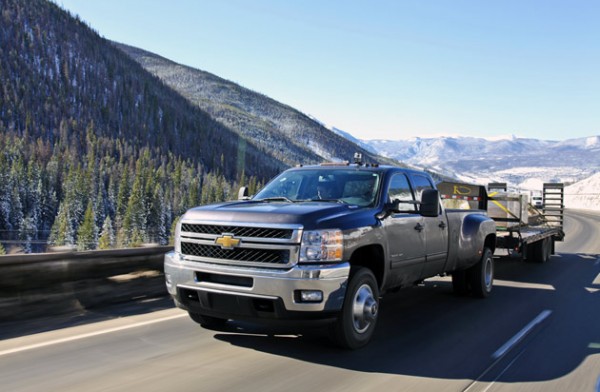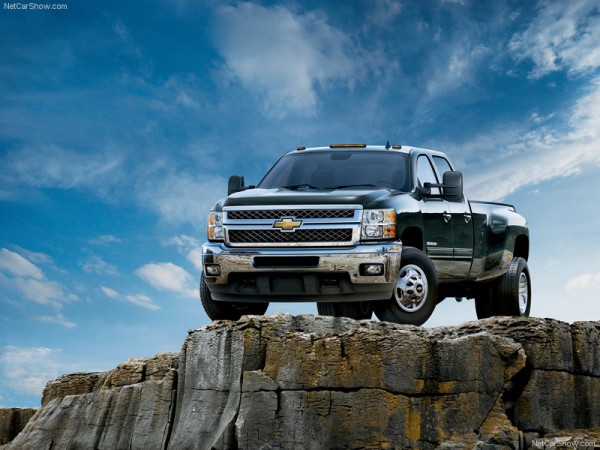
At Art Gamblin Motors we recognize that the Chevy Avalanche is a segment defining vehicle that is unsurpassed in its utility, versatility and performance in its segment. The Ford F-150 just can’t compete with the Avalanche on any level. The Avalanche has greater power, performance, handling, safety and functionality. Below is a short sampling of some of the ways in which the Chevrolet Avalanche outperforms the Ford F-150:
Safety: For increased safety, the front shoulder belts of the Chevrolet Avalanche are height-adjustable, and the rear seats have child car seat anchors. The Ford F-150 has only front height-adjustable seat belts and child safety anchors. The Avalanche’s standard pretensioning seatbelts sense rear collisions and tighten the front seatbelts accordingly to protect passengers from injuries including whiplash. The F-150 doesn’t offer a whiplash protection system.
Warranty: Chevrolet’s powertrain warranty covers the Avalanche 40,000 miles longer than Ford covers the F‑150. The Avalanche’s corrosion warranty is also 1 year longer than the F‑150’s. Engine: The Avalanche’s Vortec 5.3L V8 Sequential Fuel Injection engine produces 18 more horsepower than the Ford F‑150’s standard 3.7 DOHC V6. The Avalanche’s Vortec engine is also equipped with FlexFuel which allows it to run on emissions reducing E85 fuel. Active Fuel Management is also standard. Both the sequential fuel injection system and the Active fuel management system allow the Avalanche excellent fuel economy and efficiency. Moreover, the Avalanche has 5.5 more gallons of fuel capacity than the standard F-150. This allows the Avalanche a greater maximum driving range than the F-150. The F-150 offers nothing comparable to these features.
Engine: The Avalanche’s Vortec 5.3L V8 Sequential Fuel Injection engine produces 18 more horsepower than the Ford F‑150’s standard 3.7 DOHC V6. The Avalanche’s Vortec engine is also equipped with FlexFuel which allows it to run on emissions reducing E85 fuel. Active Fuel Management is also standard. Both the sequential fuel injection system and the Active fuel management system allow the Avalanche excellent fuel economy and efficiency. Moreover, the Avalanche has 5.5 more gallons of fuel capacity than the standard F-150. This allows the Avalanche a greater maximum driving range than the F-150. The F-150 offers nothing comparable to these features.
 Suspension and Handling: The front and rear suspension of the Avalanche use coil springs for a smoother ride, more responsive handling and precise control than the F‑150, which uses inferior leaf springs in the rear. The Avalanche also has an available driver controlled suspension system. The F‑150’s suspension doesn’t even offer adjustable shock absorbers. For better handling the track on the Avalanche is wider than the F‑150’s. The Avalanche’s engine vibration is almost nonexistent in the cab because it has liquid-filled engine mounts. The F‑150 still uses inferior conventional solid rubber engine mounts. The Avalanche offers car-like ride and handling, while the F-150 has unresponsive control and a rough ride. At Art Gamblin Motors, your Puget Sound Car Dealer, we know that the Chevy Avalanche simply dominates over the Ford F-150. So we invite you to come test drive a new Chevrolet Avalanche with us here in Enumclaw Washington and experience the Avalanche’s high level of power and performance for yourself. You will surely appreciate our welcoming pressure-free environment staffed by friendly expert sales associates. Most importantly though, we have been family owned and operated for over 40 years, which is why we have always treated all our customers as family. Come and see why Art Gamblin Motors is a superior place to buy a vehicle, and you will understand why we are the top online rated Chevrolet dealer in the state!
Suspension and Handling: The front and rear suspension of the Avalanche use coil springs for a smoother ride, more responsive handling and precise control than the F‑150, which uses inferior leaf springs in the rear. The Avalanche also has an available driver controlled suspension system. The F‑150’s suspension doesn’t even offer adjustable shock absorbers. For better handling the track on the Avalanche is wider than the F‑150’s. The Avalanche’s engine vibration is almost nonexistent in the cab because it has liquid-filled engine mounts. The F‑150 still uses inferior conventional solid rubber engine mounts. The Avalanche offers car-like ride and handling, while the F-150 has unresponsive control and a rough ride. At Art Gamblin Motors, your Puget Sound Car Dealer, we know that the Chevy Avalanche simply dominates over the Ford F-150. So we invite you to come test drive a new Chevrolet Avalanche with us here in Enumclaw Washington and experience the Avalanche’s high level of power and performance for yourself. You will surely appreciate our welcoming pressure-free environment staffed by friendly expert sales associates. Most importantly though, we have been family owned and operated for over 40 years, which is why we have always treated all our customers as family. Come and see why Art Gamblin Motors is a superior place to buy a vehicle, and you will understand why we are the top online rated Chevrolet dealer in the state!



 Ride and handling: For
Ride and handling: For 
 The Ford Focus Electric is the electric hatchback interpretation of the original gas-powered Ford Focus. It was therefore not designed from the beginning to be an electric vehicle, but rather adapted from the gasoline-powered model. As an all-electric vehicle it requires careful trip planning since you will be stranded when the vehicle reaches its maximum driving range.
The Ford Focus Electric is the electric hatchback interpretation of the original gas-powered Ford Focus. It was therefore not designed from the beginning to be an electric vehicle, but rather adapted from the gasoline-powered model. As an all-electric vehicle it requires careful trip planning since you will be stranded when the vehicle reaches its maximum driving range.
 Safety: For improved safety, the front shoulder belts of the Chevrolet Traverse are height-adjustable, and the middle and rear seat shoulder belts have child comfort guides to move the belt to properly fit children. The Ford Explorer doesn’t offer comfort guides on its middle or rear seat belts. The Chevrolet Traverse has Daytime Running Lights to help keep it more visible under all conditions. The Explorer doesn’t offer Daytime Running Lights. The Traverse has a standard “limp home system” to keep drivers from being stranded if most or all of the engine’s coolant is lost. The engine will run on only half of its cylinders reduce its power and light a warning lamp on the dashboard so the driver can get to a service station for repairs. The Explorer doesn’t offer a lost coolant limp home mode, so a coolant leak could strand you or seriously damage the truck’s engine. Being stranded on the side of the road can also be a safety hazard—putting you in greater danger of a collision while stranded.
Safety: For improved safety, the front shoulder belts of the Chevrolet Traverse are height-adjustable, and the middle and rear seat shoulder belts have child comfort guides to move the belt to properly fit children. The Ford Explorer doesn’t offer comfort guides on its middle or rear seat belts. The Chevrolet Traverse has Daytime Running Lights to help keep it more visible under all conditions. The Explorer doesn’t offer Daytime Running Lights. The Traverse has a standard “limp home system” to keep drivers from being stranded if most or all of the engine’s coolant is lost. The engine will run on only half of its cylinders reduce its power and light a warning lamp on the dashboard so the driver can get to a service station for repairs. The Explorer doesn’t offer a lost coolant limp home mode, so a coolant leak could strand you or seriously damage the truck’s engine. Being stranded on the side of the road can also be a safety hazard—putting you in greater danger of a collision while stranded.

